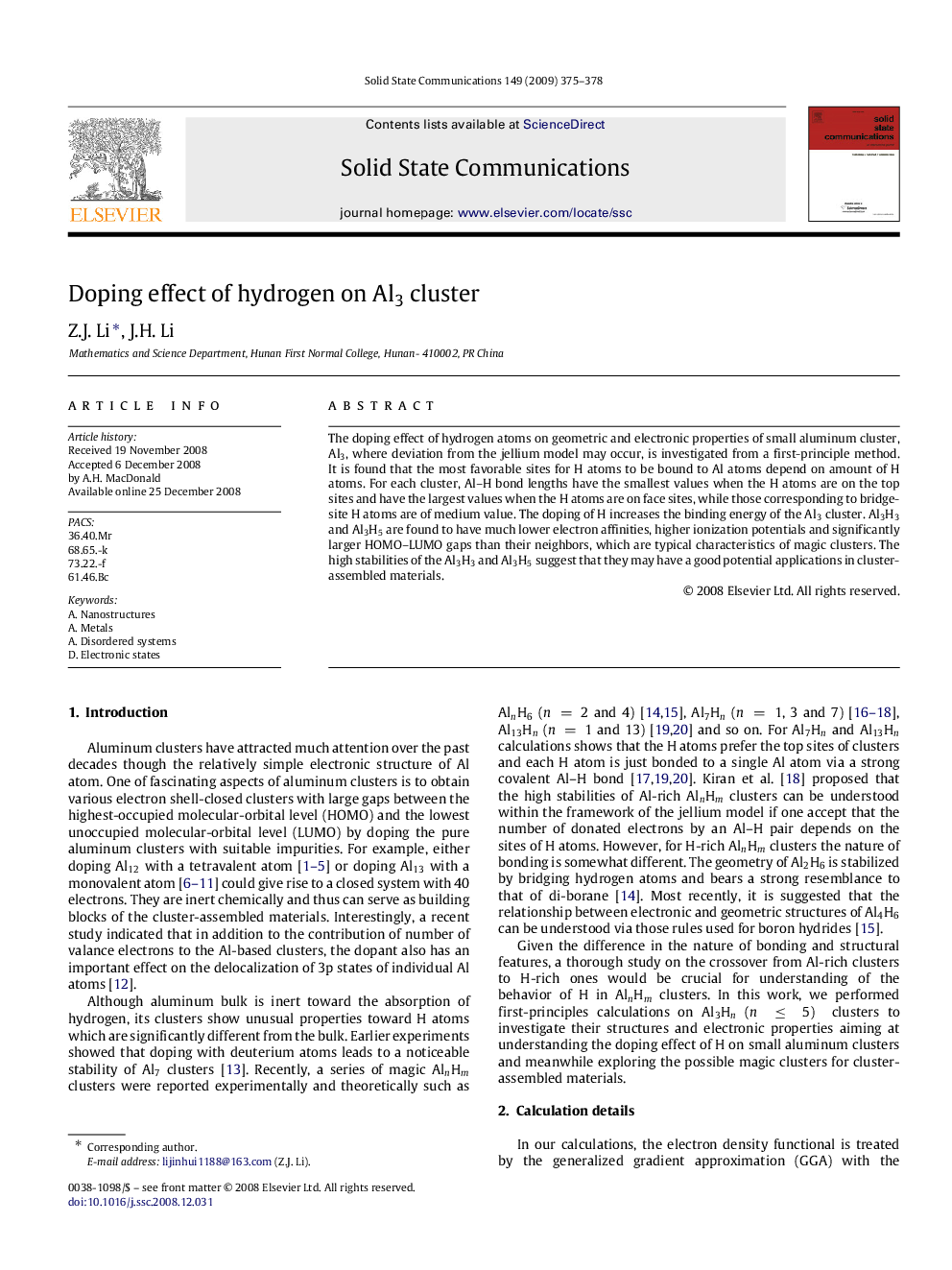| Article ID | Journal | Published Year | Pages | File Type |
|---|---|---|---|---|
| 1594675 | Solid State Communications | 2009 | 4 Pages |
The doping effect of hydrogen atoms on geometric and electronic properties of small aluminum cluster, Al3, where deviation from the jellium model may occur, is investigated from a first-principle method. It is found that the most favorable sites for H atoms to be bound to Al atoms depend on amount of H atoms. For each cluster, Al–H bond lengths have the smallest values when the H atoms are on the top sites and have the largest values when the H atoms are on face sites, while those corresponding to bridge-site H atoms are of medium value. The doping of H increases the binding energy of the Al3 cluster. Al3H3 and Al3H5 are found to have much lower electron affinities, higher ionization potentials and significantly larger HOMO–LUMO gaps than their neighbors, which are typical characteristics of magic clusters. The high stabilities of the Al3H3 and Al3H5 suggest that they may have a good potential applications in cluster-assembled materials.
